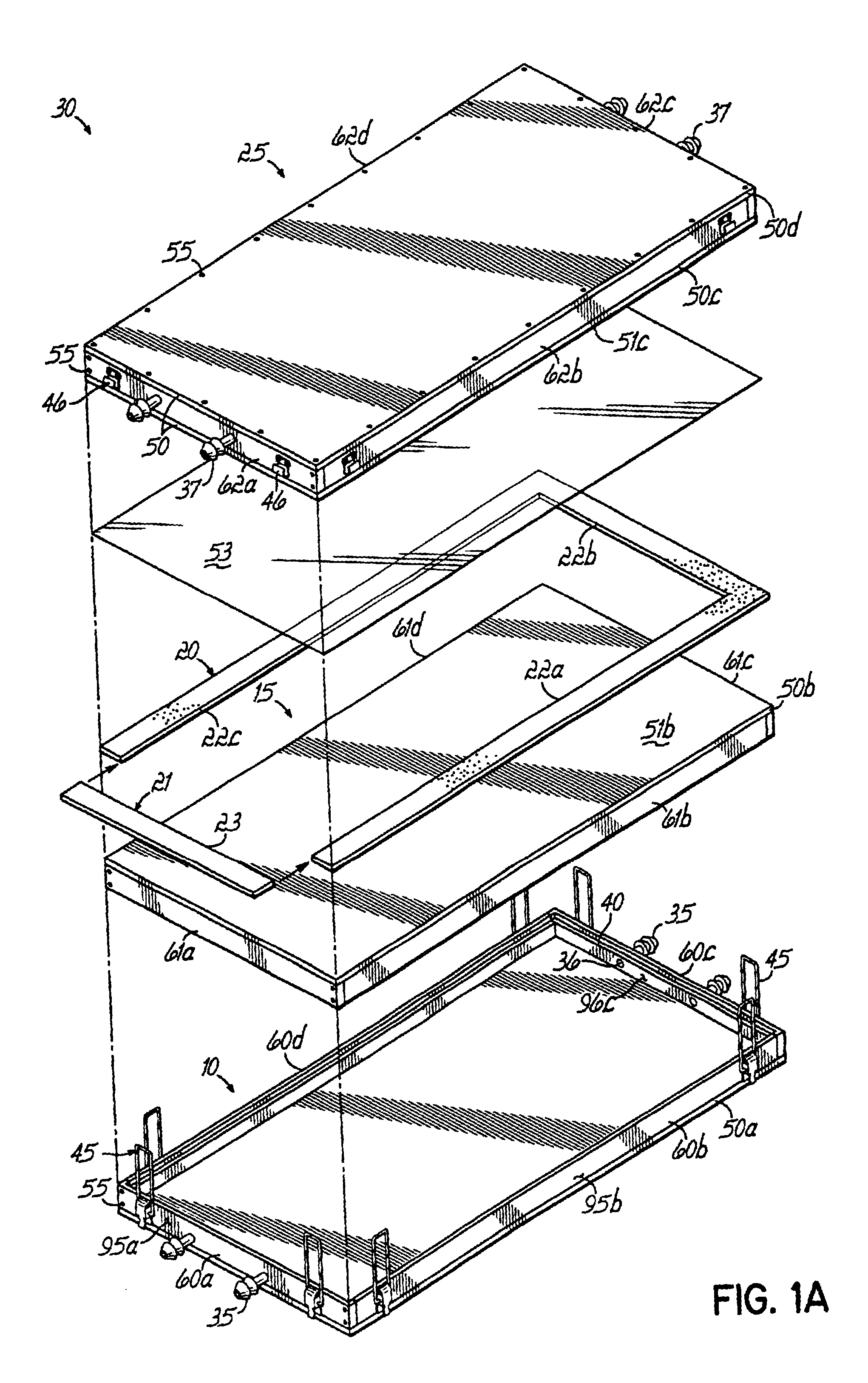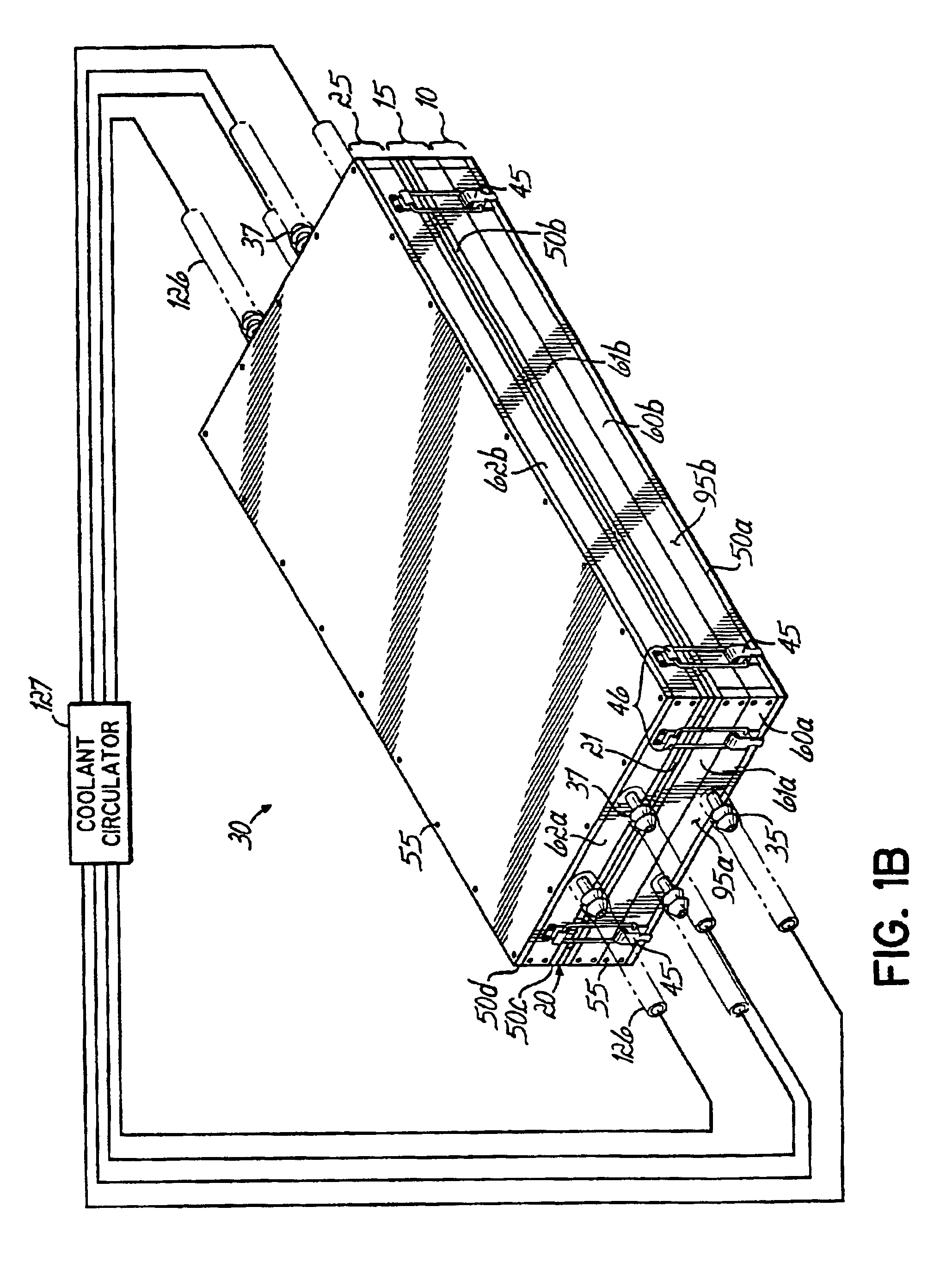Apparatus for preparing a biocompatible matrix
- Summary
- Abstract
- Description
- Claims
- Application Information
AI Technical Summary
Benefits of technology
Problems solved by technology
Method used
Image
Examples
Embodiment Construction
[0030]The invention is a method and apparatus to prepare an acellular biocompatible biodegradable matrix having substantially uniform and symmetric reticulations that are formed by freezing an aqueous fluid containing protein, or protein and carbohydrate, at a controlled rate, and subsequent freeze-drying (lyophilizatiori) and a uniform thickness of less than 1 mm. The reticulated matrix is capable of serving as a support or scaffold for cells Inoculated thereon. The cells are animal cells, which encompass human cells, in one embodiment, tJie cells are epidermal and dermal cells, resulting in a cultured skin device as disclosed in co-pending related U.S. patent application Ser. No. 10 / 092,237, entitled Surgical Device For Skin Therapy or Testing and filed on even date herewith, which is expressly incorporated by reference herein in its entirety. The device prepared using the inventive apparatus facilitates cell attachment to the multiple continuous surfaces of the matrix and maintai...
PUM
 Login to View More
Login to View More Abstract
Description
Claims
Application Information
 Login to View More
Login to View More - R&D
- Intellectual Property
- Life Sciences
- Materials
- Tech Scout
- Unparalleled Data Quality
- Higher Quality Content
- 60% Fewer Hallucinations
Browse by: Latest US Patents, China's latest patents, Technical Efficacy Thesaurus, Application Domain, Technology Topic, Popular Technical Reports.
© 2025 PatSnap. All rights reserved.Legal|Privacy policy|Modern Slavery Act Transparency Statement|Sitemap|About US| Contact US: help@patsnap.com



